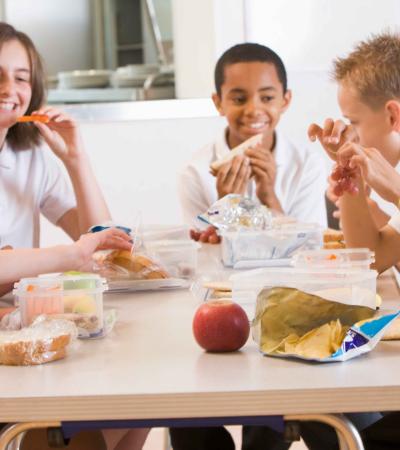The exchange goes something like this:
Librarian: “I wanted to let you know about some great resources that I have available for research with your students.”
Teacher: “I just send my kids to (insert well-known search engine here).”
Librarian: (reeling slightly and trying not to pass out as visions of what images students might happen upon flit through their head) “Wow, OK … well, I’d love to show you how easy these resources are to use and how they can add to your class, if you have just five minutes.”
Teacher: “Sure.”
Librarian: “Great! Let’s start here. ...”
That’s right, as school librarians we create programming not only for students, but for the staff, and even community, as well. There is always a need to create quality programming for teachers in the area of resources and information literacy as it relates to ensuring that students are equipped to be excellent consumers and creators of information.

It can be difficult to carve out precious minutes to provide teachers with information about your resources and how they can be beneficial to students, as well as to the teacher. Here are some great ideas for sneaking in that professional development programming where teachers might least expect it. Along the way, you’ll make some new friends and cement your role as the information specialist in the building!
Implement an information literacy newsletter
It doesn’t have to be long. In fact, keep it to a couple of paragraphs with some pictures once a month. You can use Word, Publisher, or even a service like Smore to create your newsletter. If you print it, you can utilize teacher mailboxes, the backs of stall doors in bathrooms, and even the tables in the faculty lounge to advertise your resources, facts and figures, and programming that is available in the library.
Become the best friend of your administrator
Ask to give a “media minute” at faculty meetings or on professional development days. Share resources and ideas with teachers. Make it a habit, and teachers will learn to expect to hear from you about information literacy and skills.
Spread the word about the lesson you did with the history teacher, and others will want to take advantage of your great program, too. Keep all your resources handy in an easily accessible area for teachers — such as your library web page or a LiveBinder.
Get creative
Try creating a visual reminder of all your library has to offer. Get your hands on some metal clips like you would see in a three-ring binder (they come in boxes). Then create a template that has quick start or reference guides to tools. We like using a business card template.
Punch holes after you print, attach to the clip, and teachers can hang the ring near their desks for easy access. It will be a great reminder of all the resources you have available to them and to the students. You can include databases, directions for creation tools, and tips for search strategies. Get a new resource? Create a new card and ask teachers to add it to their ring of resources.
Eat lunch
That’s right. Don’t eat at your desk. Eat lunch with teachers. Sneak in some conversation about information literacy and programming that is available in the library. Really talk up those resources over a mouthful of salad.
Attend department meetings
Know what is happening in your building. What projects are teachers working on? In the aftermath of the last election, it was surprisingly easy to get government teachers to sit down and think about how to create a project with the librarian on fake news and information literacy. How did we know they wanted to do this project? By attending their department meetings!
Micro-credentialing/badging
Why not invite teachers to become badge-holding, card-carrying members of your information literacy squad, or the resource round-up posse? Create a series of short professional development opportunities that teachers can attend before school, after school or even online. When they learn about your programming and your resources, they earn a badge.
If you feel ambitious, you can take it a step further and create a micro-credentialing in library media for teachers.
And if all else fails….
Offer food
Donuts and coffee before school. Chips and salsa after school. Provide an overview of your resources, programming and how you can work with the teacher to their benefit and the benefit of students. Even the most reluctant staff member will show for chips and salsa!
What's next?
After implementing these sneaky tactics for promoting your programming, resources, and professional development, your conversation will look much more like this:
Teacher:“I wanted to thank you for recommending that I start the research process with my students using (insert database name here). It really helped them to frame the information as they were getting started, and I was glad to see such reliable information on the site.”
Librarian: “I am so glad you found it helpful. I have a few more resources to share — if you have a second — that I think you’d like.”
Teacher: “That would be amazing. Thank you! I’m so glad that I took the five minutes to learn about this. Do you have any ideas about the type of product my students could produce with the information that they find?”
Librarian: “Do I?! Right this way!”



